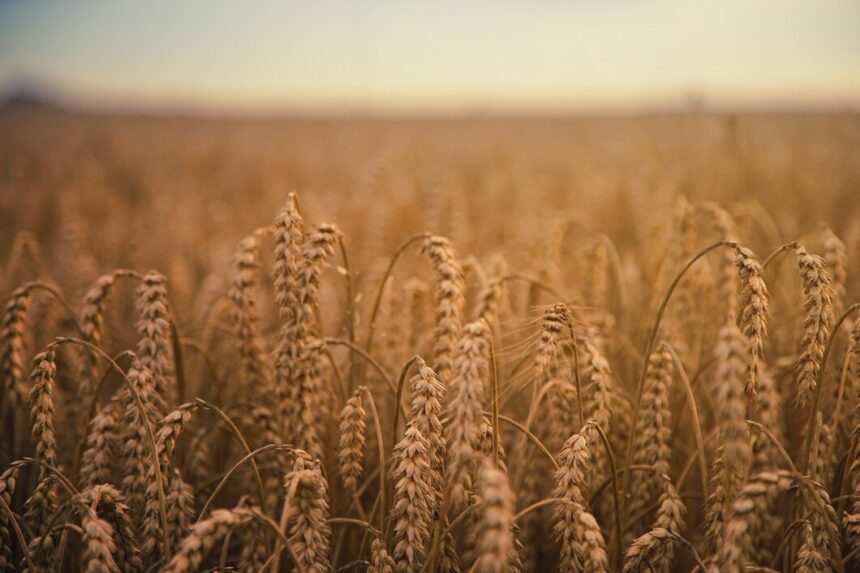Barley is a versatile and resilient crop that can thrive in South Africa’s diverse climates. Understanding the growth stages, required inputs, and management practices is essential for a successful barley harvest. Here’s a comprehensive guide to growing barley, including land preparation, growth stages, input requirements, disease management, and storage.
1. Land Preparation
a. Soil Type and Testing
Barley prefers well-drained, loamy soils with a pH between 6.0 and 7.0. Conduct a soil test to determine nutrient levels and soil structure.
b. Tillage
Prepare the land by plowing to a depth of 20-30 cm to break up soil clumps and incorporate organic matter. Follow with harrowing to create a fine seedbed, ensuring good seed-to-soil contact.
c. Fertilization
Apply a balanced fertilizer based on soil test results. Generally, barley requires nitrogen (N), phosphorus (P), and potassium (K). A common fertilizer application is 100-150 kg/ha of N, 20-40 kg/ha of P, and 20-30 kg/ha of K before planting. Consider applying additional nitrogen during the growing season.
2. Sowing
a. Timing
Sow barley in late autumn to early winter (April to June) to take advantage of cooler temperatures. Barley requires a period of cold to initiate flowering.
b. Seed Selection and Treatment
Choose disease-resistant barley varieties suited to local conditions. Treat seeds with a fungicide to protect against seed-borne diseases.
c. Planting
Sow seeds at a depth of 3-5 cm and a spacing of 15-20 cm between rows. Use a seed drill for even planting. Aim for a seeding rate of 80-120 kg/ha, depending on the variety and row spacing.
3. Growth Stages
a. Germination (Day 1-10)
Seeds will germinate within 7-10 days, depending on soil temperature and moisture. Ensure consistent soil moisture to support germination.
b. Seedling Stage (Week 2-4)
Young plants develop leaves and roots. Monitor for weeds and apply a pre-emergence herbicide if necessary to prevent competition.
c. Tillering (Week 4-6)
Barley plants develop side shoots, or tillers. This stage is critical for yield potential. Regularly check for nutrient deficiencies and pests.
d. Stem Elongation (Week 6-8)
The main stem elongates, and the plant prepares for flowering. Ensure adequate water supply and apply additional nitrogen if necessary.
e. Heading (Week 8-10)
The barley heads emerge. This is a crucial period for monitoring diseases and pests.
f. Ripening and Harvesting (Week 10-14)
Barley grains mature and change color. Harvest when grains reach 13-15% moisture to avoid losses due to shattering or mold.
4. Inputs and Machinery
a. Irrigation
Barley requires 400-500 mm of water throughout the growing season. Implement a consistent irrigation schedule, especially during dry spells.
b. Machinery
- Plowing and Harrowing: For initial land preparation.
- Seed Drill: For sowing seeds evenly.
- Sprayers: For applying fertilizers, herbicides, and pesticides.
- Harvesters: To reap the mature barley.
5. Disease and Pest Management
a. Common Diseases
- Powdery Mildew: Treat with systemic fungicides at the first sign of infection.
- Leaf Rust: Use resistant varieties and apply fungicides if necessary.
- Barley Yellow Dwarf Virus (BYDV): Manage by controlling aphid vectors and using resistant varieties.
b. Common Pests
- Aphids: Apply insecticides when infestations are detected.
- Cutworms: Use appropriate insecticides or biological controls.
c. Herbicides
- Pre-emergence: Use to control weeds before barley emerges.
- Post-emergence: Apply selective herbicides to manage weeds once barley is established.
6. Harvesting and Storage
a. Harvesting
Use a combine harvester to cut and thresh the barley when moisture levels are between 13-15%. Avoid harvesting too early or late to minimize losses and ensure grain quality.
b. Storage
Store harvested barley in a cool, dry place to prevent spoilage. Ensure storage facilities are clean and well-ventilated. Use moisture meters to monitor grain moisture and prevent mold growth.
By following these guidelines, South African farmers can effectively grow, manage, and harvest barley, ensuring high yields and quality. With proper land preparation, timely inputs, disease management, and efficient harvesting and storage practices, barley farming can be both profitable and sustainable.
Join 'Farmers Mag' WhatsApp Channel
Get the latest Farming news and tips delivered straight to your WhatsApp
CLICK HERE TO JOIN






